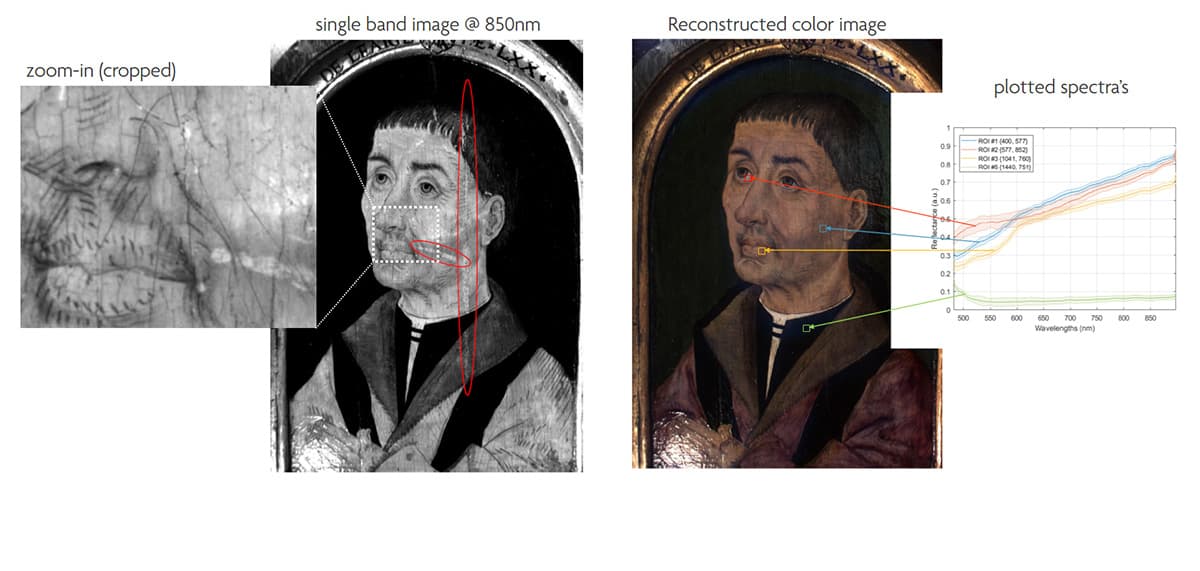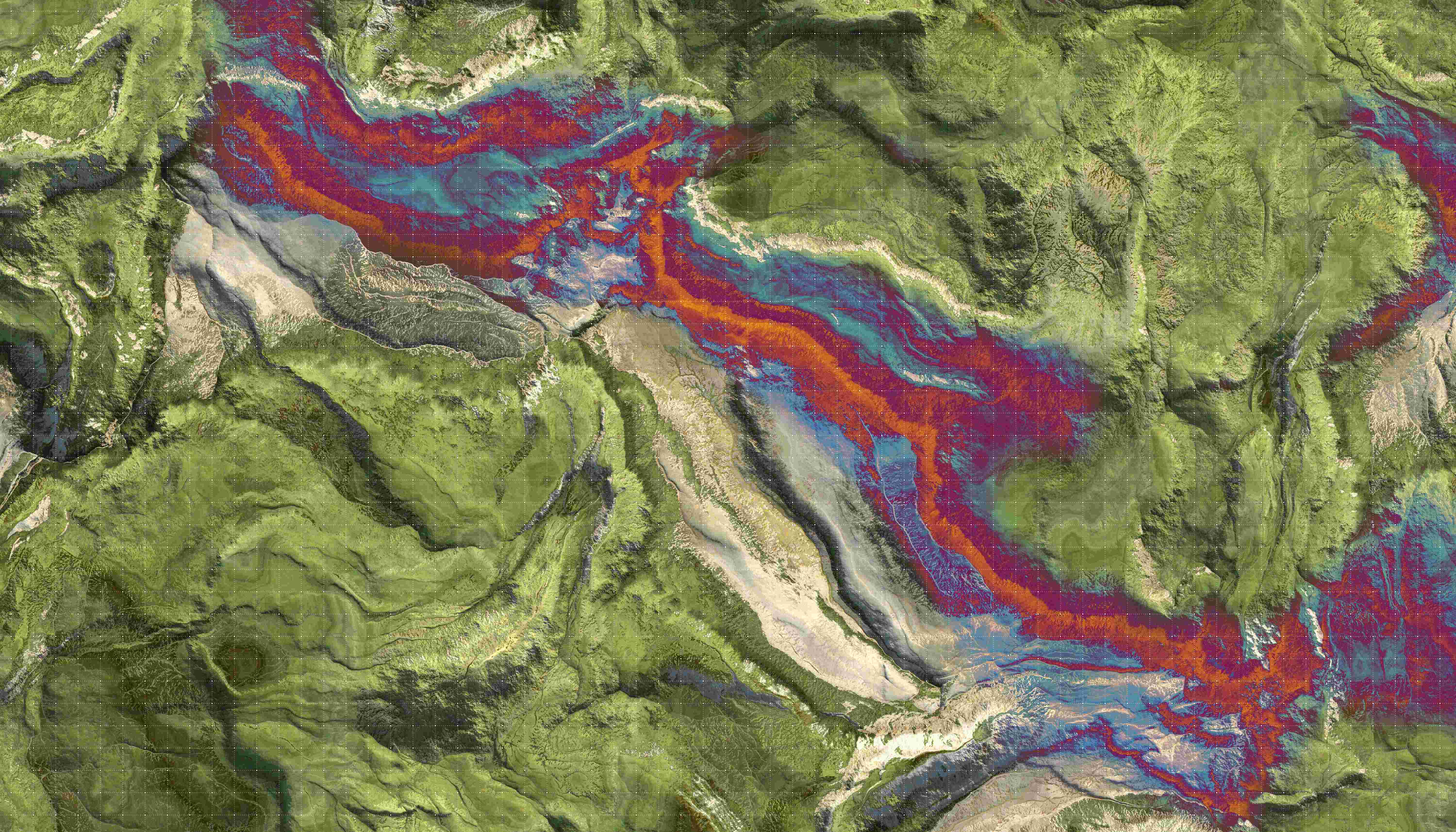
Hyperspectral art and heritage analysis
From visible to SWIR, and beyond
Peak below the surface of valuable artifacts with compact and user-friendly hyperspectral cameras based on imec's on-chip sensor technology.
Peeling off the layers of a painting or other artwork is like stepping into a time machine.
- A signature might come into view.
- By analyzing fibers or paint pigments, you can tell how, when and where it was originally made – or subsequently altered.
- The examination of an underdrawing may reveal something about the original intention of the artist.
The challenge is to do all this without damaging the artifact. That precludes too risky or invasive techniques such as taking paint samples, or scanning technologies that are time-consuming.
Hyperspectral imaging enables art historians, forgery experts and restorers to examine the spectral signatures of artworks pixel by pixel. Especially in the infra-red range – where many pigments peak – this reveals tons of information. All without touching or even moving the artifact.
Easy to scan
Traditional artwork analysis uses:
- infrared reflectometry without any fine spectral information
- or hyperspectral push-broom linescan cameras, that are difficult to set up
In a linescan approach, the artwork needs to pass by the camera, for instance on some sort of translating stage. Or it even needs be temporarily removed from its frame.
With a modern, compact hyperspectral camera, such as imec’s SNAPSCAN SWIR (0.8 Mpx) or SNAPSCAN VNIR Mobile (7 Mpx), generating a high-resolution hyperspectral image is almost as easy as pointing and clicking.
Acquiring the image the artwork can take between a few minutes or – when you require micro-meter detail – a few hours.
Easy to analyze
All of imec’s hyperspectral SNAPSCAN cameras come with the HSI SNAPSCAN software to acquire, pre-process and visualize the hyperspectral information. Thanks to its intuitive interface, you don’t need to be an expert in imaging to use it. Just select different wavelengths and see what the image reveals.
Want to try it yourself? Download the software and a reference data cube.

Snapshot by imec’s SNAPSCAN VNIR camera of a portrait of Jean Wouters (oil on panel). Courtesy of Prof. dr. Maximiliaan Martens, Ghent University.
Want a demonstration? Are you interested in using one of our cameras for your research? Or do you have any other questions?
Contact our business development team.











